Suggested Places For You
eco-natur.comSubscribe to eco-natur.com Email
Enter your email address to subscribe to eco-natur.com and receive notifications of new posts by email.
Recommended
- 1
- 2
- 3
- 4
- 5
- 6
- 7
- 8
- 9
- 10
- 11
- 12
- 13
- 14
- 15
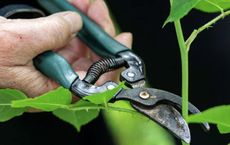
How to Choose Sustainable Gardening Tools
HOW TO CHOOSE SUSTAINABLE GARDENING TOOLS IN 2025 SUSTAINABLE GARDENING TOOLS AS A STRATEGIC CHOICE In 2025, the decision to invest in sustainable gardening tools has evolved from a niche lifestyle preference into a strategic choice that affects household budgets, business performance, and enviro...
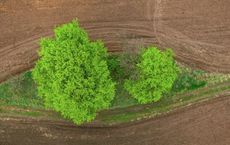
Understanding Environmental Justice and Equity
UNDERSTANDING ENVIRONMENTAL JUSTICE AND EQUITY IN 2025 ENVIRONMENTAL JUSTICE AS THE FOUNDATION OF MODERN SUSTAINABILITY By 2025, environmental justice has moved from the margins of policy debates to the center of global conversations about sustainability, climate resilience, and inclusive economi...

Ways to Support Reforestation Projects
WAYS TO SUPPORT REFORESTATION PROJECTS IN 2025: A STRATEGIC GUIDE FOR BUSINESSES AND CONSCIOUS CONSUMERS REFORESTATION AS A STRATEGIC IMPERATIVE, NOT JUST A GOOD INTENTION In 2025, reforestation has moved far beyond the realm of charitable environmentalism and has become a strategic lever for cli...
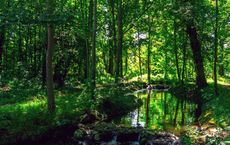
The Benefits of Forest Bathing and Nature Connection
THE BENEFITS OF FOREST BATHING AND NATURE CONNECTION IN A HIGH-PRESSURE WORLD REFRAMING SUCCESS: WHY NATURE CONNECTION MATTERS FOR MODERN LIFE AND BUSINESS By 2025, leaders and households across the world are confronting an uncomfortable paradox: in an era of unprecedented digital connectivity, m...

How to Choose Sustainable Seafood Options
HOW TO CHOOSE SUSTAINABLE SEAFOOD OPTIONS IN 2025 WHY SUSTAINABLE SEAFOOD MATTERS FOR PEOPLE, PLANET AND PROFIT In 2025, sustainable seafood has moved from a niche ethical concern to a strategic priority for households, restaurants and global businesses that understand the deep connection between...

The Role of Policy in Protecting Endangered Species
THE ROLE OF POLICY IN PROTECTING ENDANGERED SPECIES IN 2025 POLICY AS THE BACKBONE OF MODERN CONSERVATION In 2025, the protection of endangered species has become a defining test of how seriously governments, businesses and citizens take the concept of sustainability. While scientific research, g...

Sustainable Gardening Tips for Small Spaces
SUSTAINABLE GARDENING TIPS FOR SMALL SPACES IN 2025 RETHINKING NATURE IN COMPACT URBAN LIVING In 2025, as cities across North America, Europe, Asia, Africa, and South America continue to grow denser and more vertical, the idea of gardening has shifted from expansive backyards to balconies, roofto...

The Impact of Deforestation and What You Can Do
THE IMPACT OF DEFORESTATION AND WHAT YOU CAN DO DEFORESTATION IN 2025: A DEFINING TEST FOR THE GLOBAL ECONOMY In 2025, deforestation has become one of the clearest tests of whether the global economy can truly transition to a sustainable model, and for the readers of eco-natur.com, this is not an...

The Benefits of Sustainable Fishing Practices
THE BENEFITS OF SUSTAINABLE FISHING PRACTICES IN A CHANGING GLOBAL ECONOMY INTRODUCTION: WHY SUSTAINABLE FISHING MATTERS IN 2025 In 2025, sustainable fishing has moved from a specialist concern of marine biologists and environmental advocates to a central issue for governments, investors, and con...
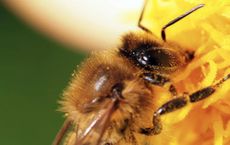
The Importance of Bees for Global Food Security
THE IMPORTANCE OF BEES FOR GLOBAL FOOD SECURITY IN 2025 BEES AT THE HEART OF A STABLE FOOD SYSTEM In 2025, as governments, businesses, and citizens grapple with the intertwined crises of climate change, biodiversity loss, and rising food prices, bees have moved from the margins of environmental d...

How to Support Indigenous Conservation Efforts
HOW TO SUPPORT INDIGENOUS CONSERVATION EFFORTS IN 2025 WHY INDIGENOUS CONSERVATION MATTERS FOR A SUSTAINABLE FUTURE In 2025, as climate risks intensify and biodiversity loss accelerates across every continent, a growing body of evidence confirms what Indigenous communities have asserted for gener...

Tips for Creating a Wildlife-Friendly Backyard
TIPS FOR CREATING A WILDLIFE-FRIENDLY BACKYARD IN 2025 Creating a wildlife-friendly backyard has evolved from a niche interest into a strategic, values-driven choice for households and businesses across the world, and in 2025 this trend is increasingly aligned with broader sustainability goals, cli...
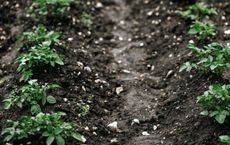
Understanding Soil Health and Regenerative Agriculture
UNDERSTANDING SOIL HEALTH AND REGENERATIVE AGRICULTURE IN 2025 WHY SOIL HEALTH IS NOW A BOARDROOM ISSUE In 2025, soil health has moved from the margins of environmental science into the core of business strategy, public policy, and long-term investment planning. Once treated as an inexhaustible b...

The Role of Businesses in Climate Action
THE ROLE OF BUSINESSES IN CLIMATE ACTION IN 2025 INTRODUCTION: CLIMATE RESPONSIBILITY IN A DECISIVE DECADE By 2025, the role of business in climate action has shifted from optional corporate social responsibility to a core determinant of long-term competitiveness, access to capital, and societal...
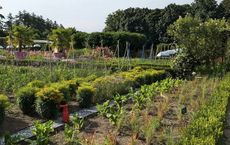
Steps to Start a Community Garden
STEPS TO START A COMMUNITY GARDEN IN 2025: A STRATEGIC GUIDE FOR SUSTAINABLE NEIGHBORHOODS COMMUNITY GARDENS AS STRATEGIC ASSETS FOR SUSTAINABLE LIVING In 2025, community gardens have moved far beyond the image of a few raised beds tucked behind a neighborhood center; they have become strategic a...

The Importance of Protecting Ocean Ecosystems
THE IMPORTANCE OF PROTECTING OCEAN ECOSYSTEMS IN A GLOBAL SUSTAINABLE ECONOMY OCEAN HEALTH AS THE FOUNDATION OF A SUSTAINABLE FUTURE In 2025, the debate about sustainability has moved firmly from the margins into the core of business strategy, public policy and everyday life, yet one crucial dime...

Ways to Support Local Wildlife in Urban Areas
WAYS TO SUPPORT LOCAL WILDLIFE IN URBAN AREAS IN 2025 Urban life in 2025 is more densely populated, more technologically connected, and more resource-intensive than at any other time in history, yet it is also a moment when cities across the world are rediscovering their role as vital habitats for...

How to Make Your Garden Pollinator Friendly
HOW TO MAKE YOUR GARDEN POLLINATOR FRIENDLY IN 2025 WHY POLLINATOR-FRIENDLY GARDENS MATTER MORE THAN EVER In 2025, the case for pollinator-friendly gardens has moved from a niche environmental concern to a core pillar of resilient communities, sustainable business and long-term economic stability...

The Benefits of Composting for Urban Dwellers
THE BENEFITS OF COMPOSTING FOR URBAN DWELLERS IN 2025 URBAN COMPOSTING AS A STRATEGIC SUSTAINABILITY LEVER By 2025, urban centers across the world have become the focal point of both environmental risk and opportunity, with cities from New York and London to Singapore and São Paulo grappling wit...

Low-Carbon Living in Cities: Everyday Tools and Community Innovations
Cities across the world stand at the forefront of the climate challenge and urban areas are responsible for more than two-thirds of global carbon emissions, and as populations concentrate in metropolitan regions, the need for practical, scalable, and community-driven solutions has never been greater...
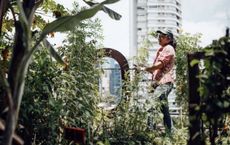
From Rooftop Farms to Vertical Forests: Cities Growing Their Own Ecosystems
Cities across the world have entered a defining era where environmental sustainability is no longer a peripheral concern but the very foundation of urban planning. With the impacts of climate change intensifying and global populations shifting increasingly toward metropolitan centers, the future of...

Urban Biodiversity Projects That Transform Concrete Jungles into Green Spaces
The concept of a city is no longer confined to steel, glass, and asphalt, so across the globe, urban biodiversity projects are challenging the notion that metropolitan environments must remain ecological deserts. Governments, city planners, NGOs, and forward-thinking corporations are transforming un...
Smart Home and City Sensors and Digital Tools for Tracking Urban Carbon Footprints
As the global population becomes increasingly urbanized—projected to reach nearly 70% by 2050—the environmental burden borne by cities has never been more critical. Urban areas consume over two-thirds of the world’s energy and account for more than 70% of global CO₂ emissions. In this context, citie...

Design Sustainable Carbon Negative New Homes or Retrofit Existing to Be More Energy Efficient
As climate concerns intensify in 2025, the built environment remains one of the largest contributors to global carbon emissions. The construction, operation, and maintenance of buildings collectively account for nearly 40% of global energy-related carbon dioxide emissions. Designing carbon-negative...

Global Agricultural Irrigation Projects
The role of water in agriculture has always been central to humanity’s survival and progress, yet in 2025, the scale and sophistication of agricultural irrigation projects have reached unprecedented dimensions. As populations expand, climates shift, and food security challenges intensify, irrigation...
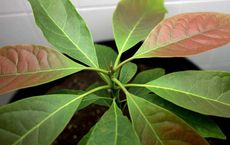
The Environmental Benefits of Planting and Using Trees
In an era where the climate crisis dominates global discussions, trees have reemerged as silent yet powerful allies in restoring ecological balance and building sustainable communities. Across continents, from urban centers in Europe to rural landscapes in Africa and Asia, initiatives focused on pla...

Why We Need to Protect Wildlife
Wildlife protection has become one of the most pressing global priorities of the 21st century. In 2025, the ecological balance of the planet is under greater threat than ever before, with species disappearing at alarming rates and ecosystems collapsing due to human-induced pressures. Protecting wild...

How to Grow Fruit Vegetables Salads Herbs at Home
A new chapter in sustainable living is unfolding as more individuals across the globe embrace the practice of growing their own food at home. This trend is not limited to rural households or those with expansive gardens; it is spreading rapidly through cities, apartments, and suburban areas where pe...

Caring for Nature: A How-to Guide
Caring for nature is no longer an optional act of goodwill; it has become a global necessity. In 2025, as climate instability, biodiversity loss, and unsustainable consumption continue to accelerate, businesses, governments, and individuals are being challenged to redefine their role in environmenta...

Can Plants Really Talk?
The notion that plants might be capable of communicating has long fascinated both scientists and everyday observers of nature. For centuries, human cultures have imbued trees, flowers, and forests with voices, spirits, and hidden wisdom. While many of these beliefs were rooted in mythology and folkl...
